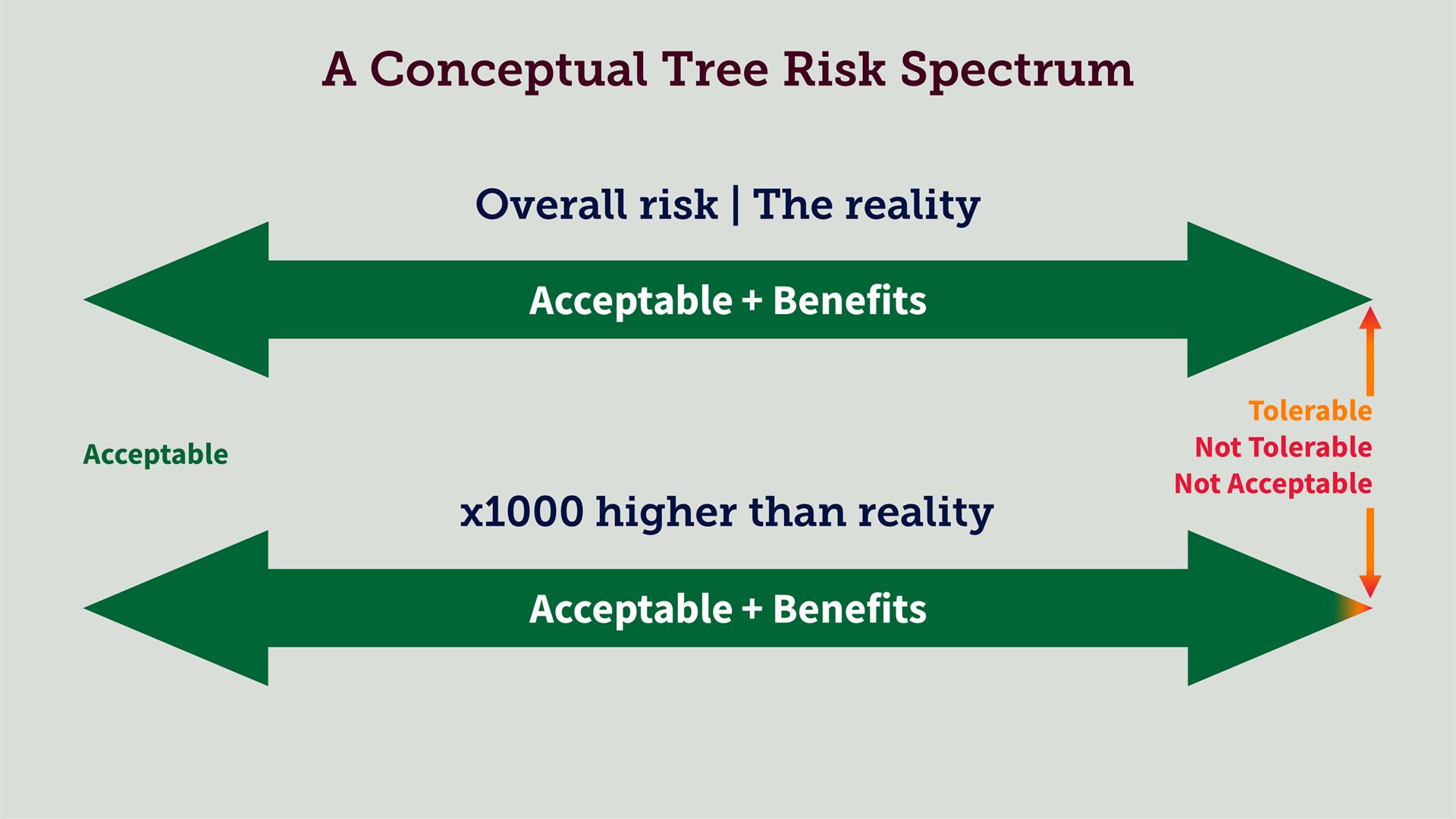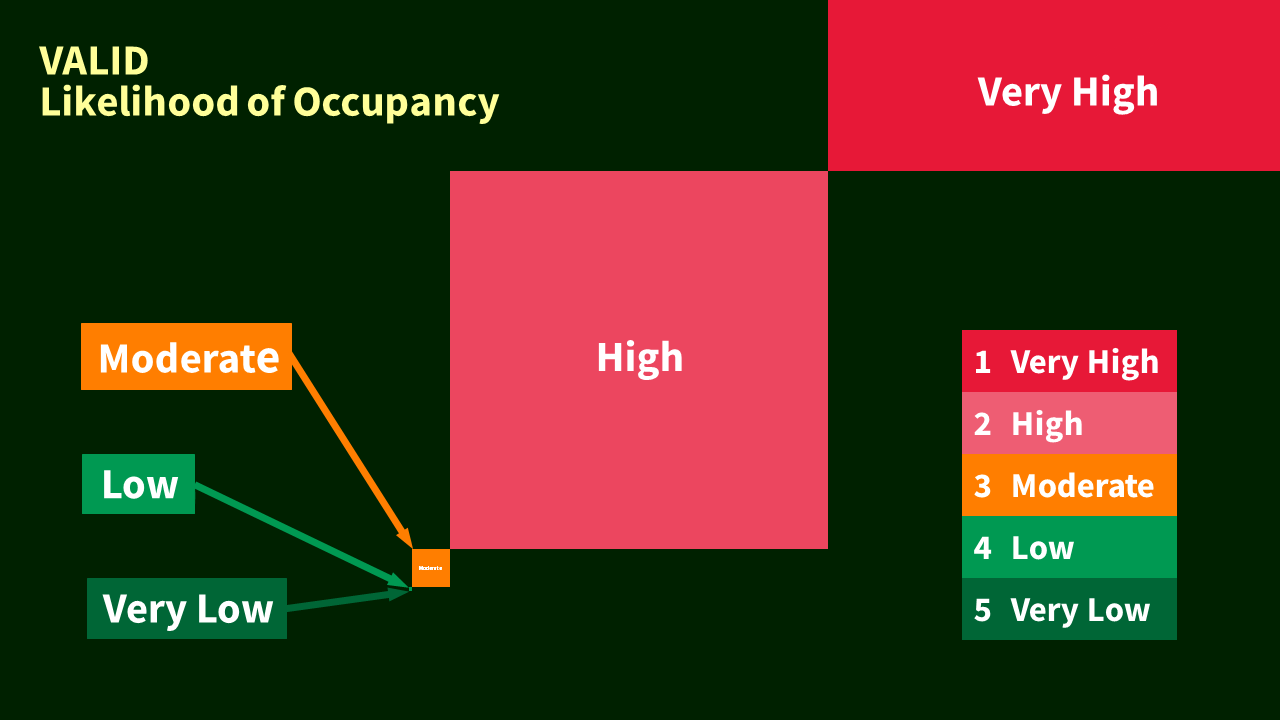In the Scale of the Problem we saw the overall risk from branches and trees falling is so extremely low we need a microscope to see it.

The only sensible way to measure risks that go this low is to use a logarithmic scale. It turns out the Goldilocks logarithmic scale for tree risk that’s not too narrow, and not too wide, that's just right is log base 10. Just like the Richter Scale is for measuring earthquakes.
So far so numberwang. What does that mean for you?
Well, when it comes to Likelihood of Occupancy decision-making, the advantages of log base 10 are obvious when drawn to scale. There’s 5 colour-coded Likelihood of Occupancy categories in VALID. If we centre High, then you can only see a bit of the heel of Very High. Nearly all of it’s off the screen. You can make sense of Moderate but you can barely make out Low. And you can’t see Very Low at all.

So, the first decision a Validator makes with Likelihood of Occupancy is what 3 categories can’t it be? Which 3 make no sense? Once calibrated this is an effortless decision. Then it comes down to one of two. Usually, which one is the most obvious because they're huge canvases. If in doubt you go for the higher one.

.png)